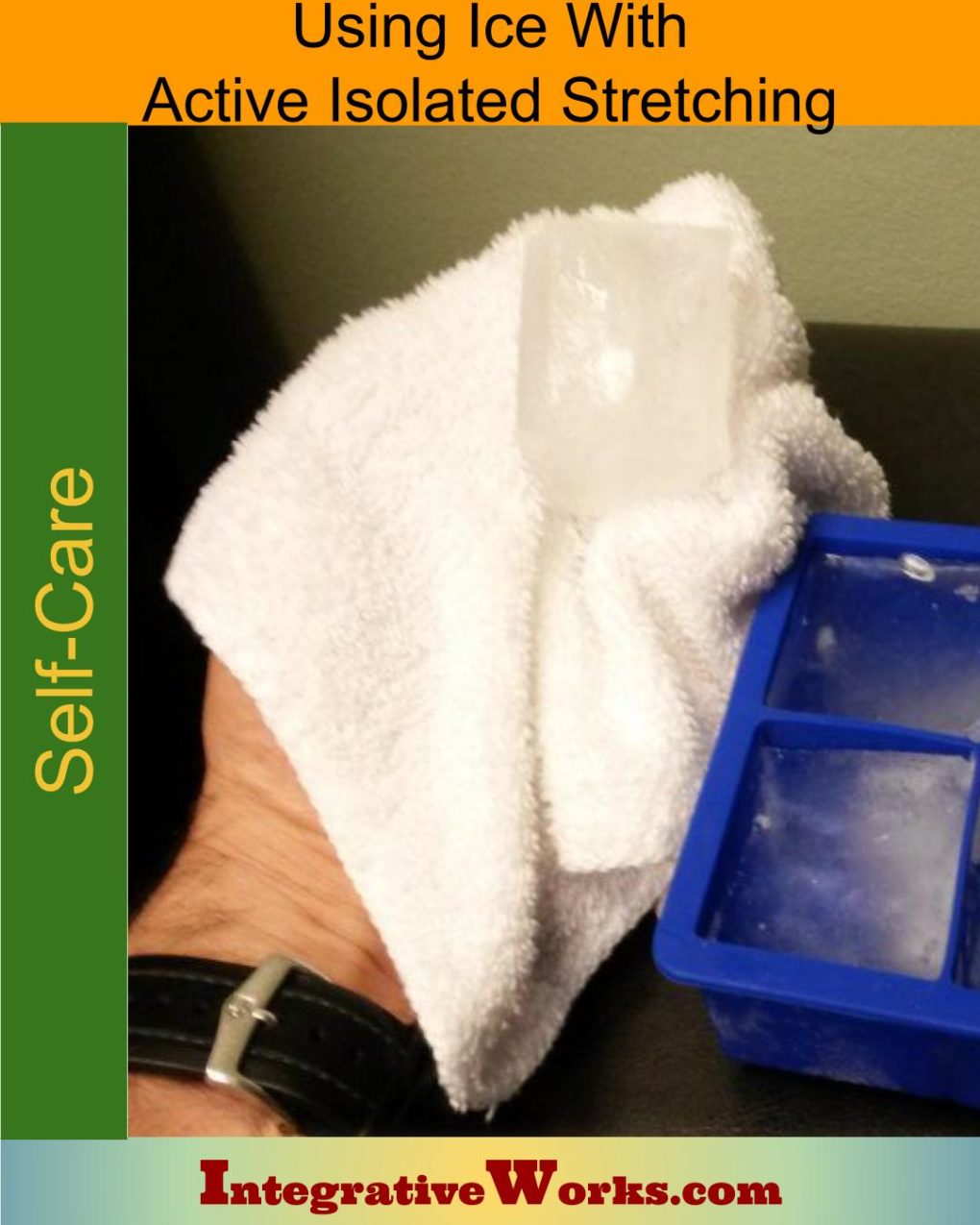These doorway stretches for chest muscles are classic because they’re quick, effective, and can be done almost anywhere. It is easy to stop at most doorways on your way back from the kitchen, office, or bathroom. They stretch the extrinsic chest muscles. Daily stretches can offer notable relief and postural change even with minimal effort.
These stretches target more than pec major. They catch all the extrinsic chest muscles, including pec minor, serratus anterior, and subclavius. These days, the typical posture has high shoulders. In that case, the clavicular pec and the middle bellies of the serratus anterior should be targeted. On the other hand, if your shoulders are low and rounded, pec minor, costal pec and abdominal pec should be targeted. Focus on the arm position that benefits you the most.
Easier, More Effective Stretches
Ice-and-stretch works well with these stretches, even though they are passive stretches. Just ice the area over the area that is bold red in the first illustration. You’ll find that you get a more effective stretch with less work.
This post shows you how to use ice to stretch with less pain, in less time, and with more effective results.
Stretches for Mid-Chest

Optional Icing for Middle Pecs
Ice the center of the pecs in the bluish triangular area. Start from the attachment on the arm. Then, stroke across the muscle in strips. Each stroke should end along the sternum, creating a fan-like pattern.
Additionally, stroking the ice along the ribs behind the pecs helps. Consequently, the serratus anterior also releases.
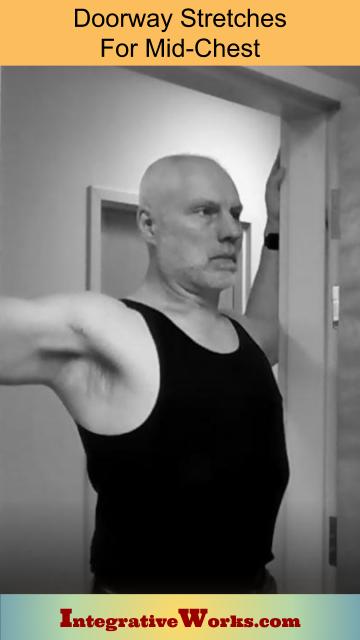
Stretching Middle Pecs
Stand with your elbows at the same level as your shoulders. Then, gently step into the doorway, stretching the center of the chest. Hold this for about two seconds. Then return to the starting position. Three or four reps is plenty if you do this a few times daily.
Elevated Shoulders &
Serratus Anterior
Elevated shoulders are a common problem. Notably, laptop usage contributes when people lean on their shoulders to support their body weight while working. So, don’t miss the middle section of the serratus anterior when you are trying to loosen those tight elevated shoulders. It attaches all along the medial border of the scapula with fibers that run upward to the top 2-5 ribs.
Look at how this yoga practitioner pushes toward the ceiling with her head. Consequently, she lowers those shoulders and catches all those scapular elevators. Often, practitioners miss this critical element.
Stretches for Upper-Chest
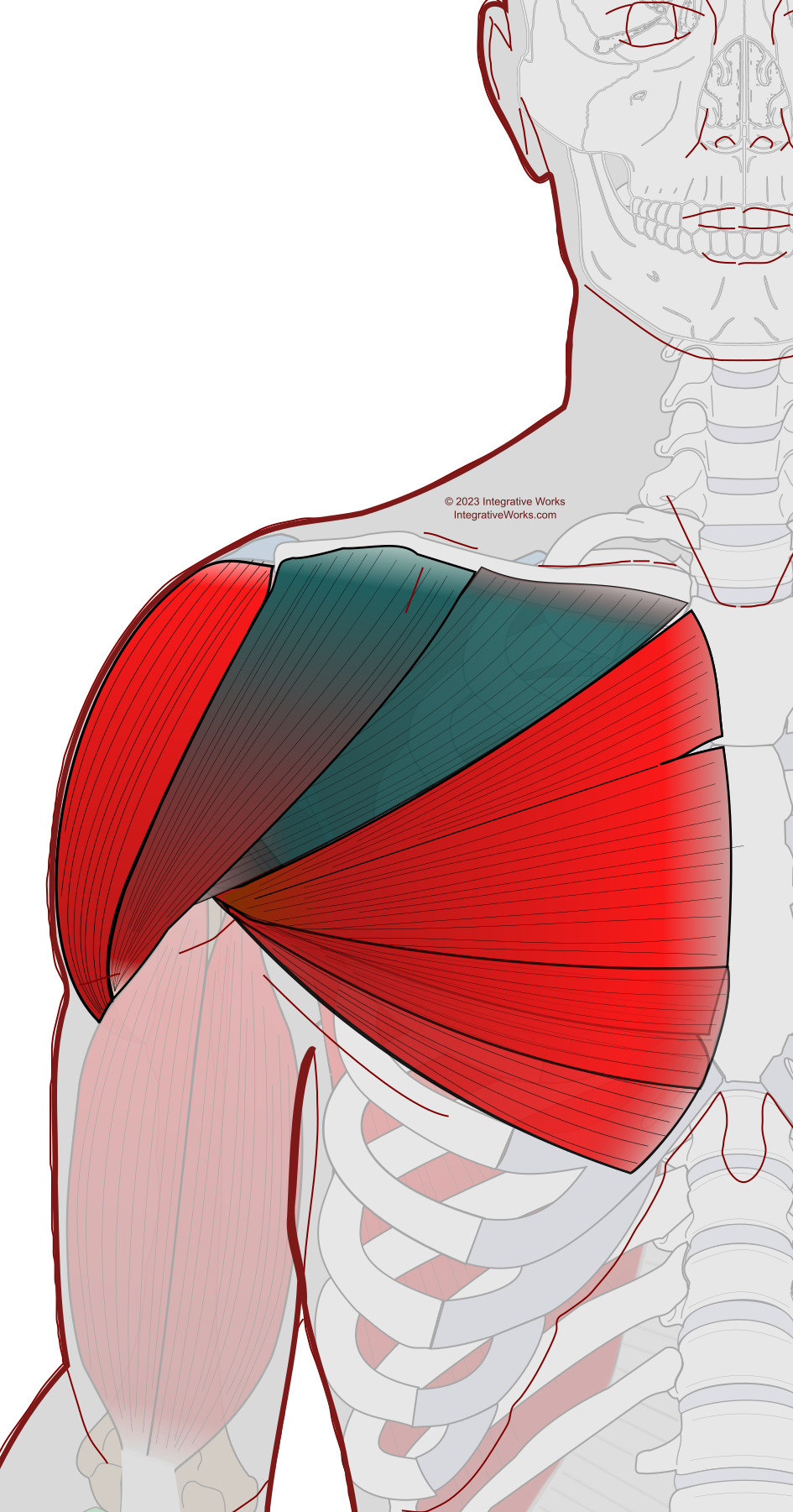
Optional Icing for Upper Pecs
Ice the upper pecs in the bluish triangular area. First, start at the attachment on the arm. Then, stroke up the muscle in strips. Each stroke should end along the collarbone, creating a fan-like pattern.
Additionally, stroking over the anterior deltoid helps to release the pec minor.
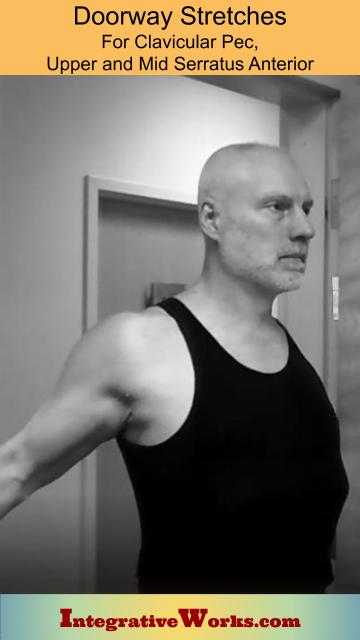
Next, ice the area from the attachment to the clavicle. This will open up the clavicular pec and ice the area over pec minor for the next stretch.
Stretching Upper Pecs
First, place your elbows on the door frame, below your shoulders. Then, gently, step into the doorway. This stretches the clavicular pec and the upper bellies of the serratus anterior.
Stretches for Lower-Chest
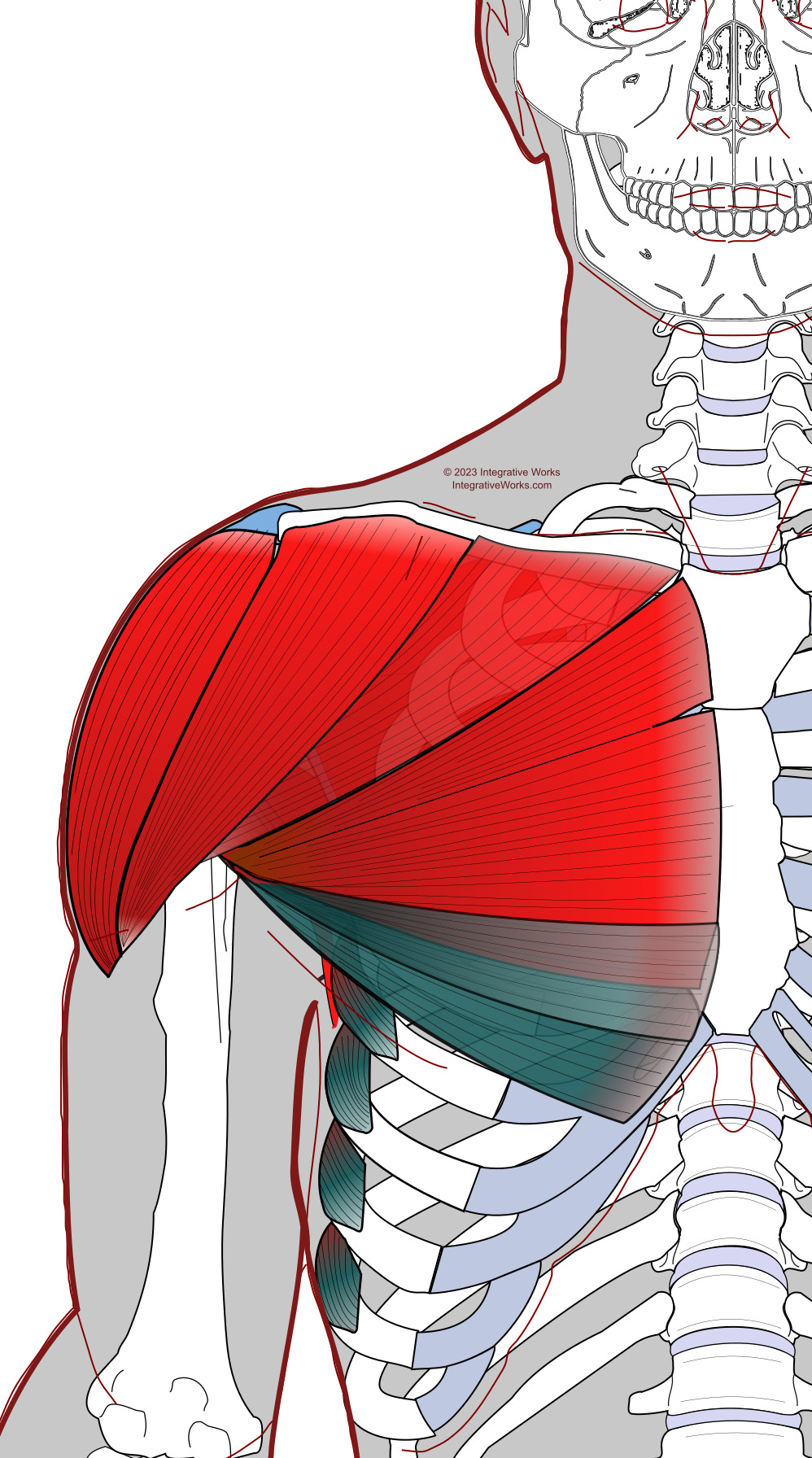
Optional Icing for Lower Pecs
Lift your arm and ice along the border of your pec major all the way down to the top of your abdominals. Additionally, you can ice the serratus anterior. Start icing near your armpit. Then, continue along the ribs and down to the chevrons, where it attaches to the abdominals.
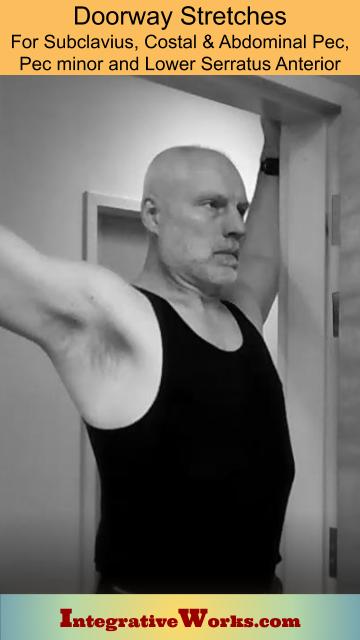
Stretching Lower Pecs
First, place your arms above your shoulders on the door frame. Then, step into the doorway. This stretches the costal pec, abdominal pec, lower bellies of the serratus anterior and pec minor. Primarily, the pec minor can restrict this stretch when the arm is raised above ~45 degrees.
Pectoralis Major and serratus anterior are complex and highly variable muscles. These posts on anatomy to better target your own needs,
Support Integrative Works to
stay independent
and produce great content.
You can subscribe to our community on Patreon. You will get links to free content and access to exclusive content not seen on this site. In addition, we will be posting anatomy illustrations, treatment notes, and sections from our manuals not found on this site. Thank you so much for being so supportive.
Cranio Cradle Cup
This mug has classic, colorful illustrations of the craniosacral system and vault hold #3. It makes a great gift and conversation piece.
Tony Preston has a practice in Atlanta, Georgia, where he sees clients. He has written materials and instructed classes since the mid-90s. This includes anatomy, trigger points, cranial, and neuromuscular.
Question? Comment? Typo?
integrativeworks@gmail.com
Interested in a session with Tony?
Call 404-226-1363
Follow us on Instagram

*This site is undergoing significant changes. We are reformatting and expanding the posts to make them easier to read. The result will also be more accessible and include more patterns with better self-care. Meanwhile, there may be formatting, content presentation, and readability inconsistencies. Until we get older posts updated, please excuse our mess.

